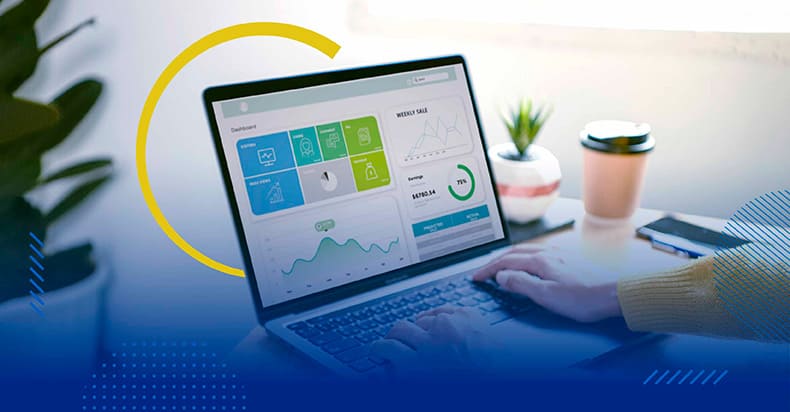
You cannot improve something you cannot measure. This saying is highly relevant especially for marketing professionals who are challenged to improve their strategies and deliver better results.
To accurately measure customer loyalty, you need data from various sources such as customer transaction data, social media data, and customer survey data.
Loyalty metrics are the key you can use to measure the performance of your loyalty program. This metric is essential to know and analyze because it can help you determine which programs can be developed and which are not working and need improvement.
So what metrics can be used to measure loyalty programs? We've put together a shortlist of metrics commonly used to measure customer loyalty, and you may find one or two options that work for your business.
What are Loyalty Metrics?
Loyalty metrics measure the tendency of customers to repeat purchases of goods or services from the same brand. This metric is also used to find out increased visibility into future revenue and how to maximize a customer's CLV (Customer Lifetime Value).
.png?width=573&name=customer%20loyalty%20metrics%20(2).png)
When monitoring various aspects of your loyalty program performance, consider the following five metrics:
1. Redemption Rate
The redemption rate is the percentage of points that have been exchanged for prizes by customers. To calculate your program redemption rate, divide the number of points a member spent on rewards by the total number of points issued for a given period.
A 15-20% score is considered suitable for most companies. If you have a high score of around or above 20%, then it means your platform is working well because your customers are redeeming their points and engaging with your venue as they should be.
However, be careful if the percentage generated is very high. It could mean that you are too generous when giving points to your members, and too few points are needed when exchanging them for high-value prizes. It is risky because it can increase operating costs and have a negative impact on your program finances over time.
If your score is below 10%, your redemption rate is too low. It is a bad sign because many of your members are not redeeming any rewards and thus are not fully taking advantage of your program. This lack of participation can lead to higher program abandonment rates. It would be best to look at your rewards program and how you market it to your members.
2. Point Breakage Rate
The Point Breakage Rate is the percentage of points issued that cannot be redeemed.
If your damage rate is high (above 40%), then it indicates that your customers may be earning points, but they are not actively involved in your loyalty program. A variety of reasons can cause this — points expire too quickly, members don't see the value, drop out of the program, or never earn enough points to redeem for anything. A high breakdown rate may also indicate that your customers don't know how to participate in your loyalty program.
It's also important to note that significant damage can signify that your customers find it too difficult to participate in your loyalty program. Here are some suggestions to minimize damage to this point:
- Get creative with rewarding moments by adding more ways for customers to earn points
- Reward member engagement such as product referrals or social sharing
- Offer better rewards at different prices
- Surprise and make customers happy with free bonus points
- Offer limited-time promo
- Make sure customers know how to redeem points
- Proactively remind customers of the expiration date of points
3. Customer Retention Rate
Customer Retention Rate is a metric that evaluates the percentage of customers who are loyal to you over time. A higher CRR indicates that your retention strategy is successful and that you are more likely to be successful in achieving your retention marketing goals.
If you have a low retention rate, it results from poor customer satisfaction and indicates something is preventing your customers from staying loyal to your brand and program. There are several essential steps your company can take to increase customer retention rates:
- Perform churn analysis that examines why customers leave
- Build customer trust and over-deliver customer experience
- Leverage customer data to analyze retention rates by different customer segments and look for potential factors that may have a positive or negative impact on performance
- Identify opportunities to serve customers better and remember there is always room for continuous improvement
- Appreciate the actions and behavior of loyal customers
4. Participation Rate
The participation rate is used to determine the percentage of purchase transactions made by loyalty program members. To calculate the participation rate, take the number of active loyalty program members and divide it by the total number of your subscribers.
A high participation rate indicates that your program provides significant value to your customers that motivates them to join. The average reward program has a 23% participation rate, and anything above is excellent.
Do the following if you need to increase customer participation rates:
- Offer relevant and attractive prizes that your customers want to pursue
- Promote your rewards program across all your channels and your website
- Create email campaigns specifically designed to introduce new subscribers to your rewards program as well as promote the new program or feature updates to existing customers
It is one of the most important metrics you can have when starting and maintaining a loyalty program. This metric allows you to see how your program is performing. Your participation rate mustn't be below 15%. If you are in the 20-25% range, you are in a good place and need to ensure that your program is successful.
5. Customer Churn Rate (CCR)
This metric measures the percentage of customers who have stopped making purchases during a specific period. It is an important metric because it can help you develop a retention strategy. So the lower the CCR, the more effective your retention strategy will be.
You can present your churn rate as:
- Number of lost customers
- Lost repeat business value
- Percentage of missing repeat values
In addition to measuring your customer churn rate, track your win-back rate. It allows you to count the number of returning customers.
Essential Metrics for Customer Loyalty in Google Analytics
In addition to the metrics above, you can also use Google to view the customer loyalty matrix. The following is a crucial matrix owned by Google.
.png?width=790&name=customer%20loyalty%20metrics%20(4).png)
1. New vs. returning visitor rate
These metrics help you determine the efficiency of your marketing campaigns and the overall effectiveness of your content. To get the new vs. returning visitor rate, you divide the number of repeat visitors by the total number of unique visitors to your site in a given period.
Under the "eCommerce" tab in the Google Analytics menu, you can set up tracking for this metric by checking the two boxes – "Returning Users" and "New Users."
2. Time To Purchase (Time-Lag)
This metric helps you understand how long it takes someone to buy from your website and whether that behavior differs across your customer segments.
This matrix can help you remarket, increase sales, and identify other ways to improve your marketing techniques. Open the navigation menu and go to "Multi-channel funnel" to measure the lag time. Below the dropdown, you will find an overview of the lag time.
3. Path lenght
This metric measures each visit to your site in more depth. In other words, this metric helps you to see how many pages your average visitor views before completing a purchase.
It helps you know where your customers are spending most of their time. Go to Conversion » Multi-channel Funnel » Path Length to find your path length.
4. Returning user engagement
Return user engagement measures how active buyers are back on your site. Metrics such as page details, user behavior, recency, and frequency help track this type of user engagement.
More specifically, metrics like bounce rate, average page per visit, percentage of returning visitors, and these metrics are for measuring returning user engagement in Google Analytics.
5. Frequency and recency
An essential part of the behavioral data in your Google Analytics dashboard is the Frequency and Recency of visitors to your website. Frequency indicates how often the same individual visits your site in a given period.
Recency tells you how long it has been since a visitor last came to your site. By categorizing and analyzing this data, you can better understand the types of visitors who convert to your site, how long it takes them to convert, and how your digital strategy can leverage this insight to capitalize on the behavior of future website visitors.
Conclusion
With the metrics above, you can get a better picture of customer loyalty to your brand and take actionable insights to create brand advocates and more loyal customers.
The Tada loyalty & rewards program has dashboard features that contain essential information, such as the loyalty metrics. This feature can help you monitor your business based on data. You can also track earnings, transactions, and program member progress through the insights feature on the dashboard. In addition, this dashboard feature also helps you understand customers better through member analytics based on customer data.
Request our demo now to find out more about how Tada can help your business.


.png)
